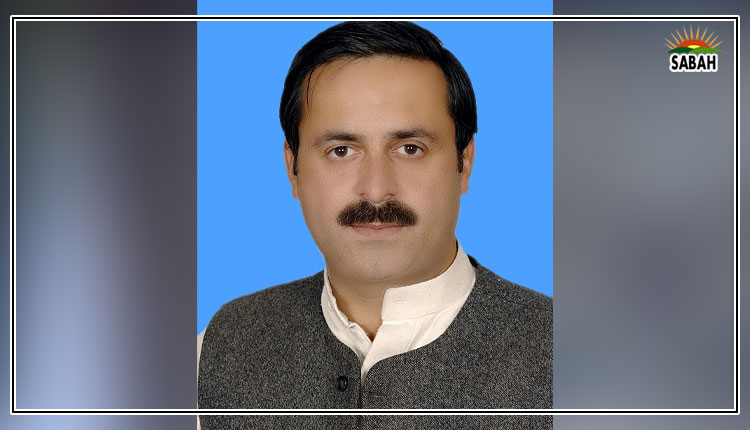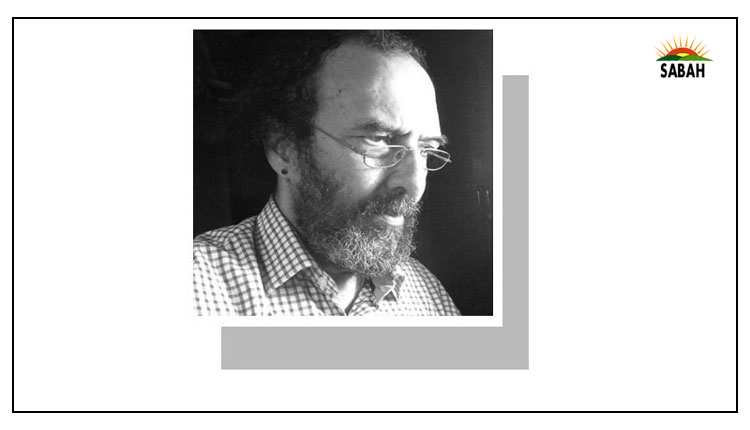Back to the two-lock basics….Jawed Naqvi
IT wasnt a coincidence that two vote-rich Indian states ruled by two formidable opposition leaders both regarded as prime minister material witnessed headline-catching communal violence last week. Coupled with the mysterious rise of a Bhindranwale doppelganger in Punjab where a robust, mainly Sikh, farmers movement recently forced Prime Minister Modi to make an unusual retreat from his pro-corporate measures the Hindu-Muslim violence in West Bengal and Bihar seems a ploy to shift the focus from a raging financial scandal, one that would topple governments in other democracies.
The violence echoed Arundhati Roys two-lock theory. It posits that events, which unfolded in Ayodhya and New Delhi in early 1990s the opening of the locks on the Babri Masjid and the opening up of the economy to free-market raiders were two sides of the same coin. Communal mayhem flowing from the mosques destruction has provided a steady smokescreen to electorally unattractive economic policies. The lock removed by the Ram temple movement uncorked a communal genie that became crucial for free-market reforms. L.K. Advanis march to Ayodhya would seem to have been immaculately timed.
Communalism and religious violence have since continued to lead Indias political discourse. The Adani stocks scam, like the Rafale jets scandal before it, would hurt the government if voters were attentive and not addicted to scoring parochial victories against harmless compatriots. With that not happening, the government can always dip into the enormous divisive reserves to ride out any temporal crisis.
Muslims have fasted and Hindus have observed Ram Navami rituals peacefully, even cordially, for years. Last weeks violence between groups of fasting Muslims and Hindus observing Ram Navami, though promptly contained by the opposition governments, indicated more than what the headlines suggested. Just when we thought the Modi government was moving towards some kind of politically useful rapprochement with the harassed and hounded Muslims, a bolt from the blue struck at the heart of the Adani empire, sending the ruling party scurrying back to the war room. The nexus between Gautam Adani and Prime Minister Modi is thinly veiled. Before the calamitous abbreviation of the Adani Groups assets, the BJP was beginning to discuss the issue of the pasmanda or depressed classes among Muslims. Discussions also covered the timing of a politically potent building of a mosque in Ayodhya as required by the supreme court judgement.
Last weeks violence between groups of fasting Muslims and Hindus observing Ram Navami indicated more than what the headlines suggested.
That communal violence in India fetches votes is axiomatic. Its yields make free-market ideologues drool. Its an asset the BJP uses with greater finesse than its competitors. Sporadic violence reportedly occurred in Gujarat and Maharashtra too where the BJP is in power directly or indirectly. But it was hardly surprising. These are the two states big businesses are headquartered in. With general elections due by May next year, the powder needs to be kept dry, above all to protect the businesses. For worried Indian business captains the sight of Donald Trumps finances being put under public scrutiny must be a nightmarish if remote possibility. On the other hand, it must be nagging for the BJP that three large states it currently rules directly or with allies are Maharashtra, Madhya Pradesh and Karnataka, all three snatched from Congress and its allies by engineering defections, and not won in a clean fight. Polarisation is prescribed in these conditions but it doesnt necessarily vacate the possibility of a robust opposition challenge upsetting the cart.
The stakes are high for the government and for the opposition. Lessons from the Muzaffarnagar violence before the 2014 elections and the flare-up with Pakistan ahead of the 2019 elections would be useful to both. There can be unforeseen sharp bends ahead for the opposition. The BJP is reportedly wooing the Left Front in West Bengal to join a mahajot to topple Mamata Banerjee, a temptation of biblical magnitude for the defeated comrades. In Kerala, the rare state the left still rules, an Adani port project that warrants the dislocation of fisher communities in particular has set off deep soul-searching within the rank and file of the ruling party, otherwise the best organiser of opposition unity.
As for the Congress, it has played the role of a catalyst in exposing the BJPs nexus with crony capitalism. It is time to acknowledge that there are at least two other vocal supporters of its campaign against the Modi government. Mamata Banerjees front-line MP Mahua Moitra and Arvind Kejriwal himself can be fearless Modi critics. What are Rahul Gandhis thoughts about joining hands with the traditional Congress baiters who may be signalling an anti-Modi accord?
The BJPs desperation is evident too. Home Minister Amit Shah told his party in Bihar to deal sternly with the rioters should it come to power in 2025. Rioters will be hung upside down.
Shah then let the cat out. The people of Bihar have decided that Modijis lotus will bloom on all 40 [Lok Sabha] seats. It explained the communal upsurge. Shahs other assertion was not easy to analyse without assuming a fear he feels from the voters of Bihar. Nitish Kumar wont become prime minister. People of the country have decided that Narendra Modi will become the prime minister of the country for the third time. Its no secret that Nitish Kumar harbours ambitions as chief minister of a populous state to put his topi in the ring should the occasion arise. On the other hand, Mamata Banerjee is not averse to seeing herself in the coveted chair. Then, Rahul Gandhi, appealing against his conviction in a Surat court on Monday, is being projected by Congress satraps as the candidate who has put himself in harms way in the oppositions bid to bell the cat. Unless the divided opposition discovers the foil to Hindutvas blood-drenched winning gambits, Modis business allies will continue to laugh their way to the bank.
The writer is Dawns correspondent in Delhi.
jawednaqvi@gmail.com
Courtesy Dawn, April 4th, 2023











